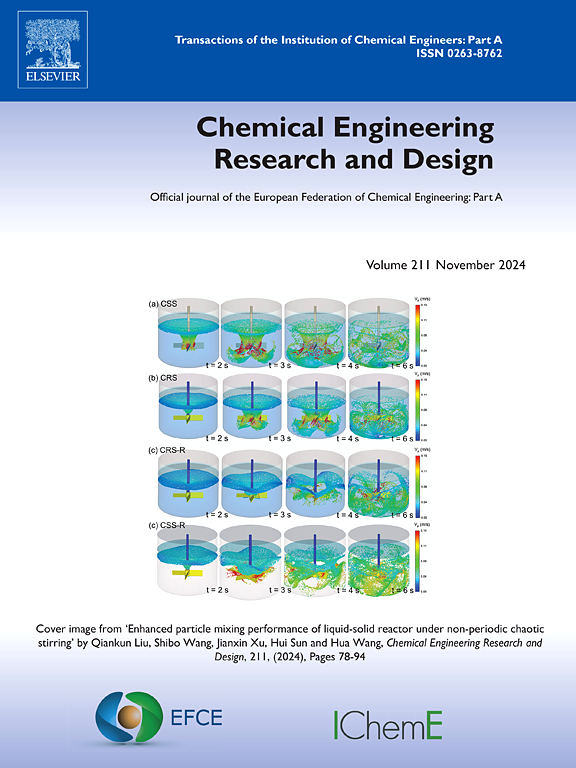使用两种β-半乳糖苷酶生产半乳寡糖(GOS)的动力学:金属离子效应和数学模型
IF 3.7
3区 工程技术
Q2 ENGINEERING, CHEMICAL
引用次数: 0
摘要
半乳寡糖(GOS)是一种功能性碳水化合物,由不同的乳糖源(如奶酪乳清)生产而成。它们是乳制品行业的相关产品。然而,由于金属离子的存在会抑制其酶法生产,这给酶法生产带来了挑战。研究了在金属离子(钙、钾、钠和镁)存在的情况下,利用乳酸克鲁维氏菌和黑曲霉中的β-半乳糖苷酶从乳糖中酶解生产 GOS 的情况。此外,还提出了一个酶动力学模型,并与之相关联,以解释金属离子对 GOS 生成的影响。对于这两种酶来说,当存在钙离子时,抑制作用更强,其次是钾、钠和镁。因此,在工业应用中,必须在酶促反应前努力去除钙离子。此外,这项工作中提出的二阶动力学模型描述了两种酶在金属离子存在的情况下生产 GOS 的情况。研究结果表明,在不同盐类条件下,利用乳酸菌和酵母菌的β-gal生产 GOS 时,钙对两种酶的抑制作用最强,其次是钾和钠。二阶动力学模型准确地描述了 GOS 的产生,更好地反映了水解抑制作用而不是转半乳糖基化抑制作用本文章由计算机程序翻译,如有差异,请以英文原文为准。
Kinetics of galactooligosaccharides (GOS) production with two β-galactosidases: Metallic ion effect and mathematical model
Galactooligosaccharides (GOS) are functional carbohydrates produced from different lactose sources like cheese whey. They are relevant products in the dairy industry. However, its enzymatic production implies a challenge due to its inhibition by metallic ions presence. Enzymatic production of GOS from lactose using β-galactosidase from Kluyveromyces lactis and Aspergillus oryzae were studied in the presence of metallic ions (calcium, potassium, sodium, and magnesium). Also, a kinetic enzymatic model was proposed and correlated to explain the metallic ion effect in the GOS production. For both enzymes, stronger inhibition effects were observed when calcium was present, followed by potassium, sodium, and magnesium. Consequently, additional efforts must be made for the calcium remotion before the enzymatic reaction for industrial applications. Moreover, the second-order kinetic model proposed in this work describes the GOS production using both enzymes with metallic ions presence. It was stablished that for GOS production using β-gal from K. lactis and A. oryzae with various salts, calcium showed the strongest inhibition for both enzymes, followed by potassium and sodium. A second-order kinetic model accurately described GOS production, better reflecting hydrolysis inhibition than transgalactosylation inhibition
求助全文
通过发布文献求助,成功后即可免费获取论文全文。
去求助
来源期刊

Chemical Engineering Research & Design
工程技术-工程:化工
CiteScore
6.10
自引率
7.70%
发文量
623
审稿时长
42 days
期刊介绍:
ChERD aims to be the principal international journal for publication of high quality, original papers in chemical engineering.
Papers showing how research results can be used in chemical engineering design, and accounts of experimental or theoretical research work bringing new perspectives to established principles, highlighting unsolved problems or indicating directions for future research, are particularly welcome. Contributions that deal with new developments in plant or processes and that can be given quantitative expression are encouraged. The journal is especially interested in papers that extend the boundaries of traditional chemical engineering.
 求助内容:
求助内容: 应助结果提醒方式:
应助结果提醒方式:


